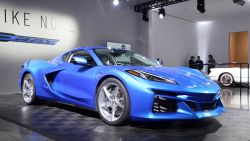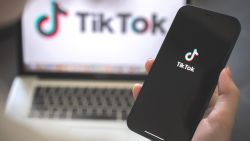Ericsson says that “rapid early momentum” and consumer enthusiasm means the switch to 5G is happening much faster than anticipated.
The Swedish telecom-equipment maker said in a report Tuesday that 45% of the world’s population will be able to access the next generation wireless networks in 2024.
Ericsson (ERIC) also revised its estimate for global 5G subscriptions, which refers to active devices on 5G networks. It now expects 1.9 billion subscriptions by the end of 2024, up 27% from its forecast in November.
“This is going much faster than we thought,” said Patrik Cerwall, executive editor of the report.
The world’s mobile providers are racing to deploy the infrastructure necessary to support super-fast 5G networks, which will power technologies of the future such as self-driving cars and smart cities.
Limited 5G launches have already taken place in the United Kingdom, the United States and South Korea. China is expected to follow shortly.
Chip and smartphone makers have also been eager to launch associated products, which will help speed adoption, Ericsson said.
Even so, the real action will come after 2020, Cerwall said.
“It’s not that [5G adoption]necessarily goes faster the first one or two years, but once you hit mass scale, [and] billions of people [want] this technology,” he said.
Ericsson said it expects 4G LTE subscriptions to peak at around 5.3 billion in 2022, after which the number will slowly decline.
One wild card is the political disagreement over China’s Huawei, the world’s largest supplier of telecoms equipment and one of Ericsson’s competitors. Nokia (NOK) also sells telecom equipment.
The US government claims that Huawei equipment poses a security threat, and the Trump administration is lobbying allies to bar the company from supplying gear for their 5G networks.
Huawei denies that its products are a threat.
Experts say that excluding Huawei from 5G networks would slow the process of getting the technology up and running and make it more expensive.
The export ban on Huawei announced last month by the US government, which will bar American suppliers from sending the company key components, also poses problems.


























